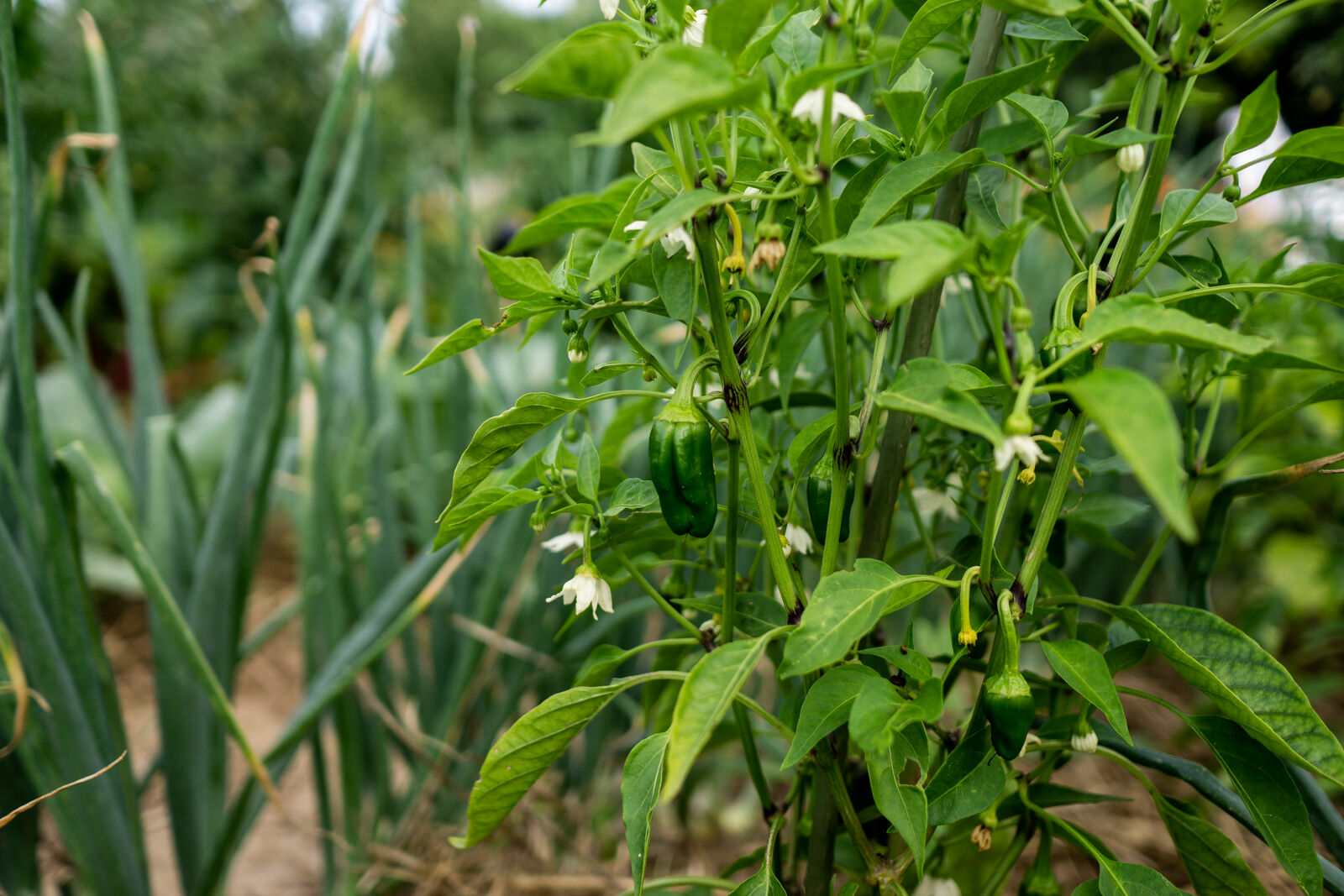
Companion Plants for Chilies & Peppers: What (Not) to Plant With Capsicum?
Peppers and chili peppers belong to the Solanaceae family and are heat-loving crops. They can only be planted outdoors in May and are often grown in greenhouses. Here you will find an overview of what you need to bear in mind when intercropping with peppers, what are companion plants and antagonistic plants, information on succession cropping and crop rotation, as well as a few example planting plans with peppers and chillies.
This Article Contains:
- Planting Chili & Peppers: Location and Spacing
- Chili & Peppers in Companion Planting: Suitable Neighbors
- Companion Plants for Peppers & Chili
- Can You Plant Chillies With Tomatoes?
- What (Not) to Plant With Chillies / Peppers
- Companion Planting Table: Companion Plants on a Glance
- Succession Planting & Crop Rotation
- Planting Plans for Peppers & Chili
- Planting Peppers & Chillies in a Raised Bed: Planting Plan for Mixed Crop
- Frequently Asked Questions About Chili & Peppers in Companion Planting
Quick Overview
What to Plant Next to Peppers & Chili?
- Location: Peppers and chilies need a warm, sunny and preferably sheltered location. They are sensitive to frost and should only be taken out after the last frosts.
- Companion plants: In addition to peppers and chilies, you can also plant basil, savory, borage, dill, nasturtium, carrots, garlic, cabbage, lavender, parsley, marigold, lettuce, marigolds, thyme, tomatoes and onions .
Preventing Diseases & Pests With Companion Planting
- Basil and nasturtium prevent aphids and whiteflies, onions and garlic help against fungal diseases such as gray mold.
- You should not plant aubergines, peas, fennel, beet, potatoes and celery next to peppers and chili peppers.
Planting Chili & Peppers: Location and Spacing
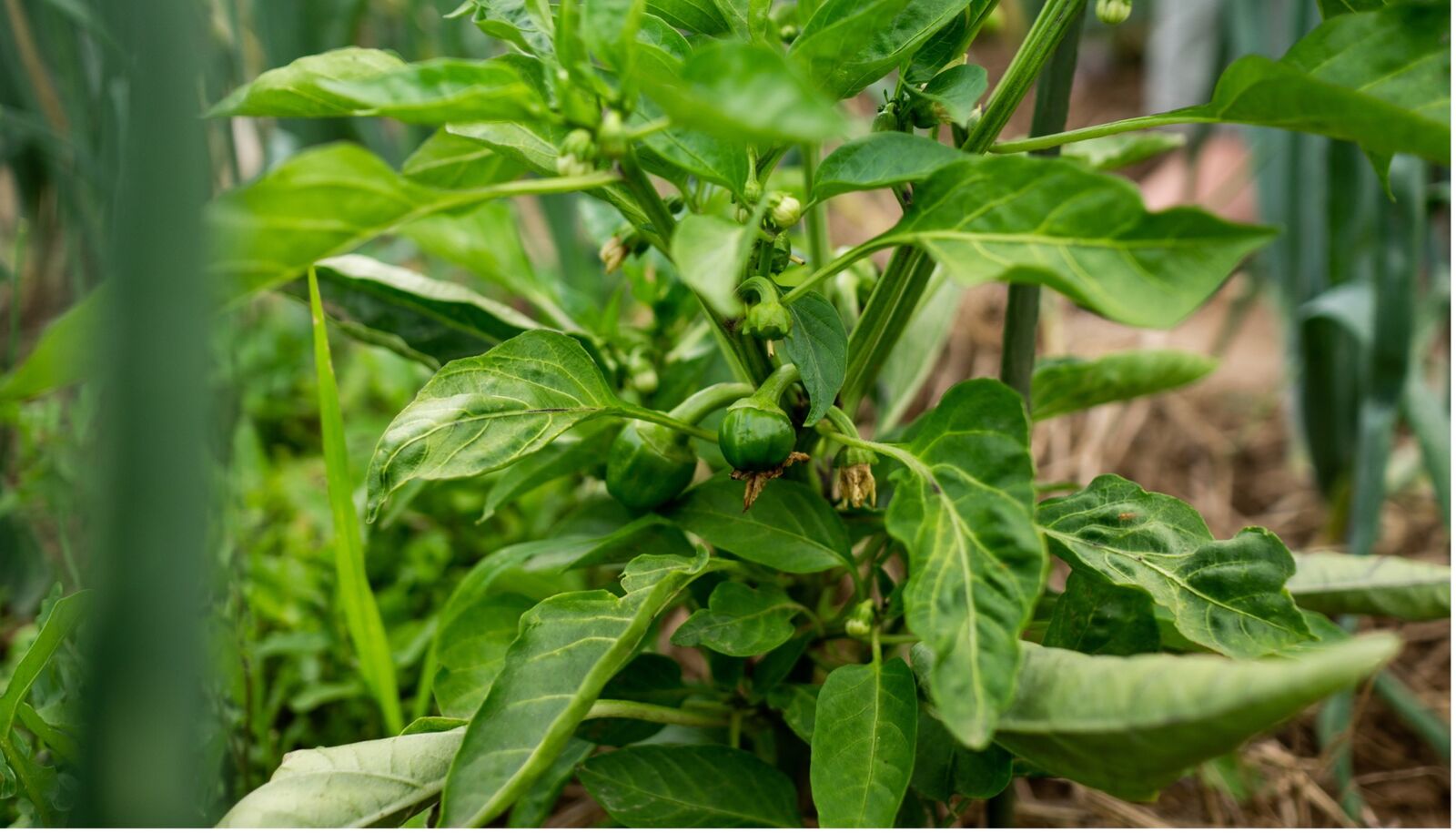
The right location is crucial for your plants to grow well. Peppers and chilies need a sunny and warm spot. Sufficient light and protection from strong winds are also important. The soil should be nutrient-rich, well-drained and slightly moist. In the bed, peppers and chilies need about 40 - 50 cm/15.7 - 19.7 in between plants and about 60 cm/23.6 in between rows. You can find more information on growing peppers and chilies in our article Sowing, Planting and Harvesting Peppers and Chilies.
As chilli and bell pepper plants are not allowed outside until May, you should pre-grow them or buy young plants. When buying young plants, however, you should bear in mind that you have significantly less choice of varieties than if you pre-grow them yourself. You can find out what you should bear in mind in our article Propagating Peppers and Chillies: Tips for Healthy Seedlings.
Chili & Peppers in Companion Planting: Suitable Neighbors
Peppers and chili peppers belong to the nightshade family (Solanaceae). Plants from the same family tend to attract similar pests and diseases. So when planning your bed, make sure that other nightshade plants are not in the direct vicinity of peppers. The exception is tomatoes, which are often grown together with peppers as they complement each other well.

Want to Know about Companion Plants for Peppers?
With our bed planner, you can easily plan a colourful mixed crop. Good and bad companion plants are displayed directly and you get tips on succession planting and crop rotation!
Plan a Bed NowCompanion Plants for Peppers & Chili
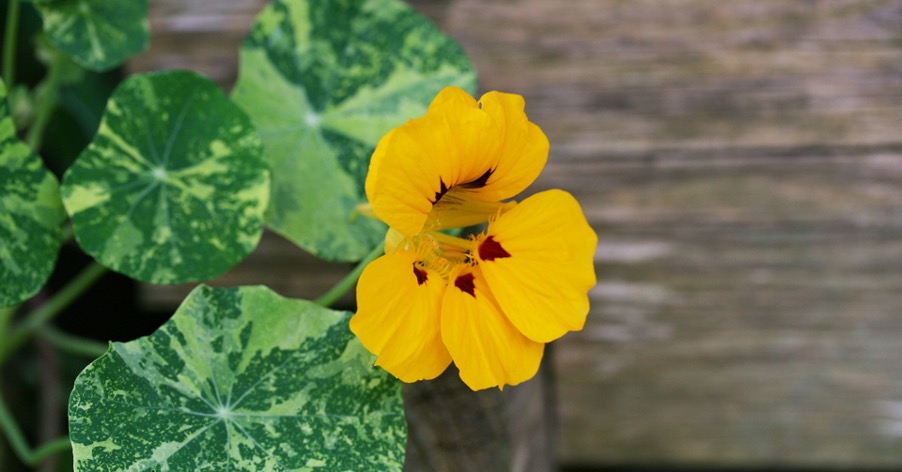
Companion plants are basil, savory, borage, dill, nasturtium, carrots, garlic, cabbage, lavender, parsley, marigold, lettuce, marigold, thyme, tomatoes and onions. Flowers, garlic, herbs and onions go particularly well with peppers, as they prevent diseases and pests. These companion lants complement the peppers in their growth and have different nutrient requirements, so they do not compete with each other.
Planting Cucumbers and Peppers Together
Cucumbers are companion plants for peppers and chilies. They have similar light and water requirements, and their shallow roots do not compete with the deeper roots of peppers and chilies. They also complement each other in their growth (peppers grow bushy, cucumbers tendril-like) and the cucumber leaves can provide shade and thus protect against strong sunlight.
Growing Strawberries and Peppers Next to Each Other
Strawberries are companion plants for peppers and chili peppers. They also need plenty of sun and loosen the soil with their shallow roots. This promotes the growth of peppers and chili peppers. Strawberries also benefit from the nitrogen-rich soil that peppers and chilies prefer. They grow in ground cover and thus retain moisture in the soil for longer, which benefits the peppers.
Peppers & Chilies: Reduce Diseases and Pests With Companion Planting
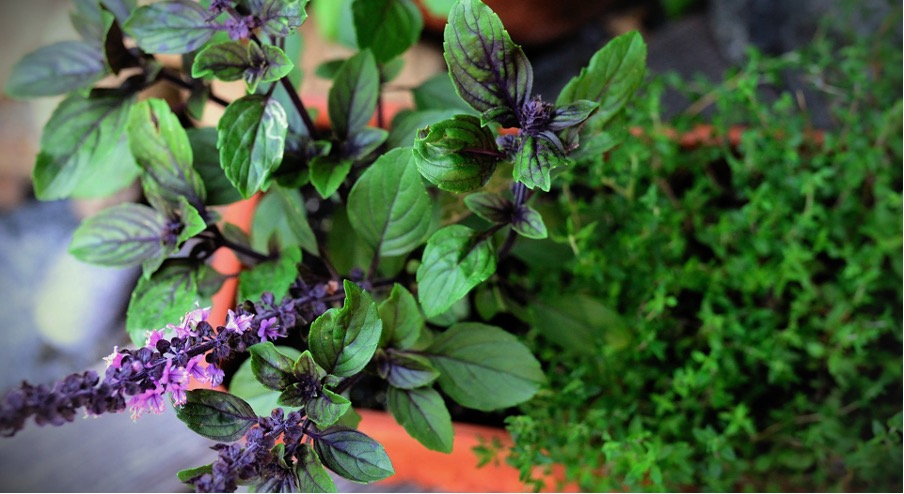
You can reduce the risk of diseases and pests with the right companion plants. Make sure that you do not plant peppers and chilies directly next to plants that are affected by similar pests or diseases to prevent mutual infection. Aphids, whitefly and gray mold often attack bell pepper and chili plants. Plant basil and nasturtium next to your plants to combat aphids and white flies. Onions and garlic help against fungal diseases such as gray mold. They release fragrances that keep pests and diseases away from your plants.
Can You Plant Chillies With Tomatoes?
Despite their relationship, tomatoes and peppers are often planted together. This is because both plants need very warm and sunny conditions to produce many fruits. They are therefore often planted together in the greenhouse. As long as there are no diseases or pests in the soil and you keep enough space between the plants, this is not a problem. Tomatoes are particularly susceptible to gray mold, so you should ensure good ventilation, especially if the plants are in a greenhouse. You can see how you can grow peppers and tomatoes together in our example greenhouse planting plan below.
What (Not) to Plant With Chillies / Peppers
On the other hand, aubergines, peas, fennel, beet, potatoes and celery are antagonistic plants. Aubergines and potatoes belong to the same family as peppers and chillies and therefore attract similar diseases. Fennel inhibits the development of peppers and chili plants and should therefore not be grown in the immediate vicinity. Peas, beet and celery compete with peppers and chilies for the same nutrients.
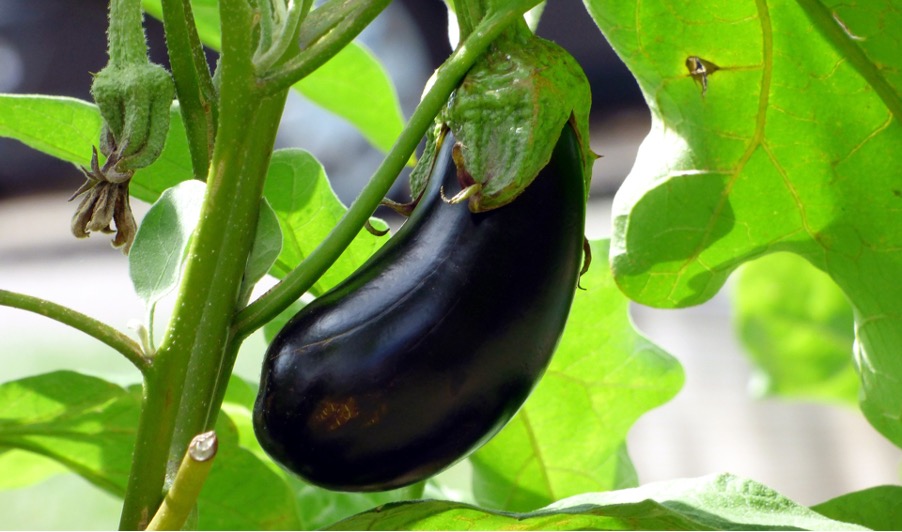
Companion Planting Table: Companion Plants on a Glance
In this companion planting table for peppers and chili you will find a list of companion and antagonistic plants. We have divided the companion plants into vegetables and herbs for a better overview.
| Companion Plants (Vegetables) | Companion Plants (Herbs & Flowers) | Antagonistic Plants |
|---|---|---|
| carrots | basil | aubergines |
| garlic | savory | peas |
| cabbages | borage | fennel |
| lettuce | dill | potatoes |
| tomatoes | nasturtium | beetroot |
| onions | lavender | celery |
| parsley | ||
| marigold | ||
| tagetes | ||
| thyme |
Succession Planting & Crop Rotation
In the following two sections, you will find out what you need to bear in mind with regard to crop rotation and crop rotation for peppers and chilies. Peppers are heavy feeders, so it is important not to plant heavy feeders directly after them. By rotating between heavy, medium and light feeders, you do not deplete your soil. By alternating between plant families, you also prevent diseases and pests. You can find out more about what exactly crop rotation and crop rotation are in our article on Succession Planting & Crop Rotation.
Succession Cropping After Peppers
Fast-growing crops that can withstand a little cold (e.g. lettuce and radishes) are suitable for pre-cultivation. Peppers and chili can only be planted in May as they are sensitive to frost. This means you can make good use of the space with other crops before then. Crops that remain in the bed over the winter and are harvested in spring are also well suited here. These include cabbages (cauliflower, broccoli, etc.), lamb's lettuce, onions and garlic. In the fall, when it gets too cold for your bell pepper plants, you can sow spinach or green manure (e.g. mustard and clover grass) as a catch crop.
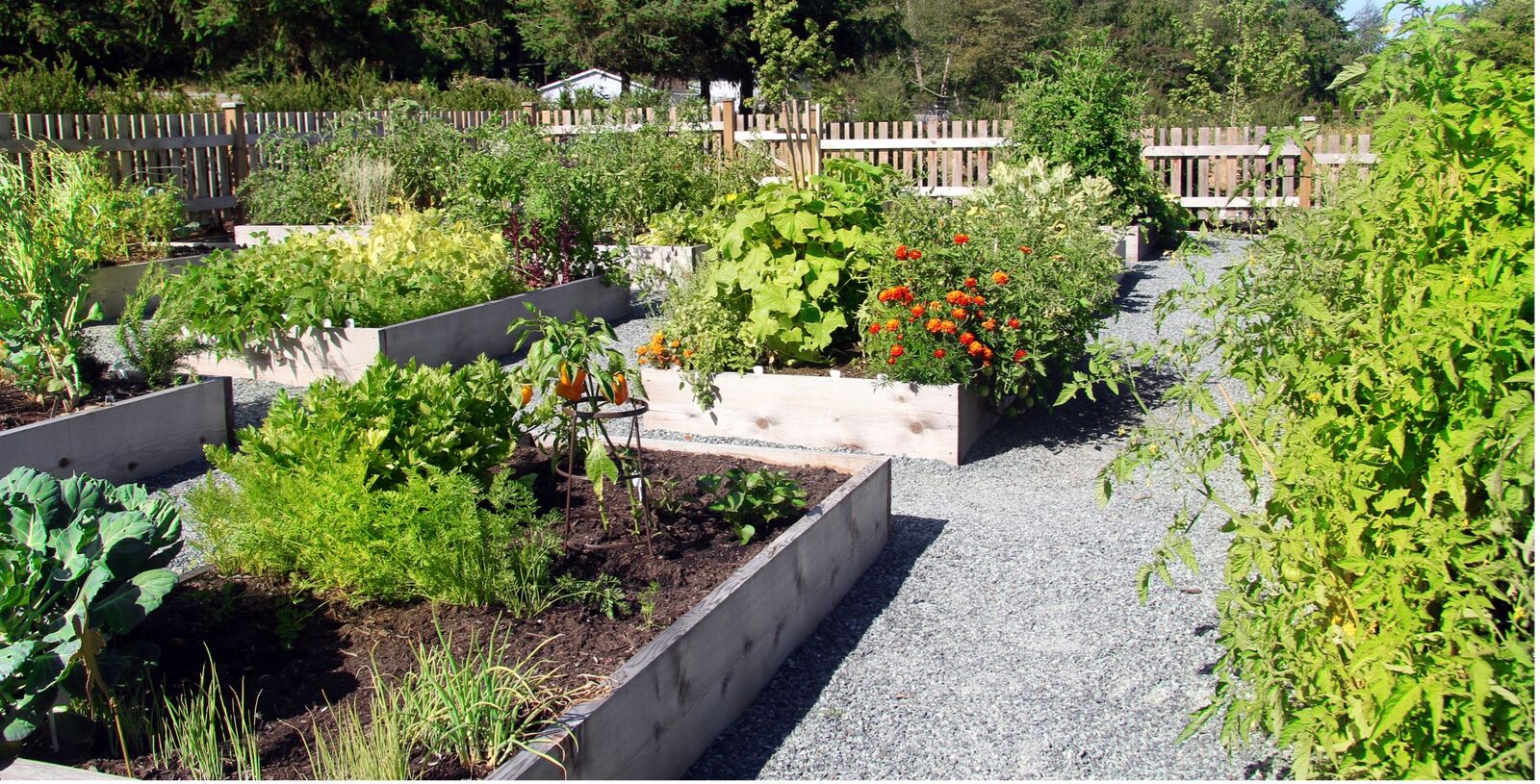
Crop Rotation
With bell pepper plants, you should take a cultivation break of 3-4 years on the same bed. This break is also recommended for other nightshade plants. If there are only a few bell pepper plants in the bed, a shorter break can be chosen depending on the health of the plants.
Planting Plans for Peppers & Chili
Peppers and chillies are often grown in a greenhouse. You can find an example plan for the greenhouse in the tomato bed for the greenhouse, where both plants are grown together. Tomatoes and peppers like to be grown in greenhouses, as they have the most ideal conditions there and it is sufficiently warm and humid. However, you can also grow peppers and chillies in somewhat sheltered locations such as raised beds around the house or under a roof and on the balcony.
Planting Peppers & Chillies in a Raised Bed: Planting Plan for Mixed Crop
Raised beds are an excellent way to grow peppers and chili peppers. The raised position means that the soil is better aerated and the plants get more heat. Make sure that you choose the right companions for your raised beds and provide sufficient sun and protection. Companion plants include cucumbers, onions and dill in the bed with peppers and chillies. When replanting, make sure that cabbages are also heavy feeders. If you plant them directly after other heavy feeders such as peppers, chilies and cucumbers, you should make sure that the soil still has enough nutrients. Otherwise, you can also plant spinach, green manure or onions and garlic in the bed instead.
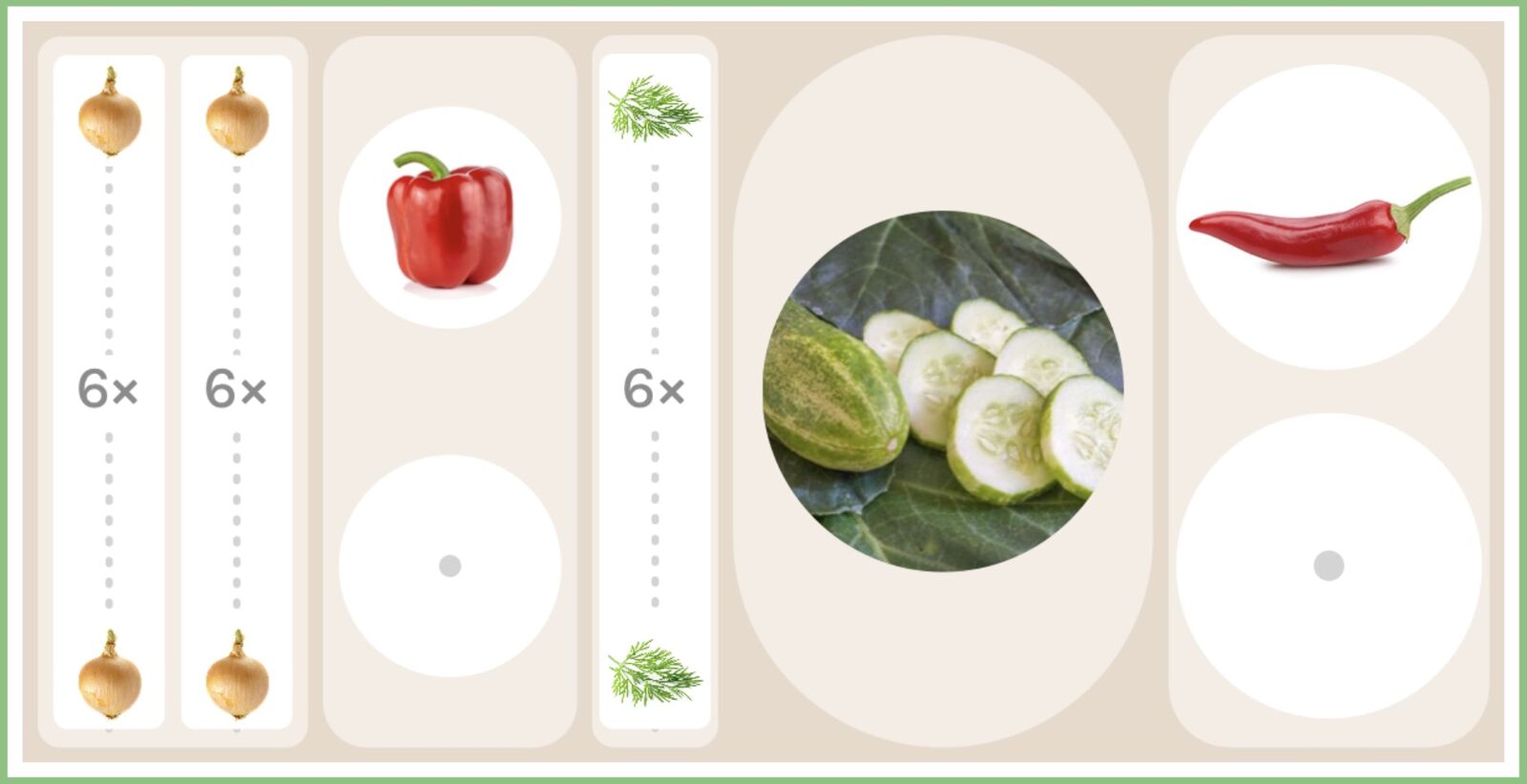

Companion Planting With Peppers & Chillies on the Balcony
You can also successfully grow peppers and chili peppers on the balcony. Choose a sunny spot and make sure the planters are large enough. When choosing plants for your balcony bed, you can use the companion plants mentioned above as a guide. You can also filter the chilli and bell pepper varieties by balcony variety in our library.
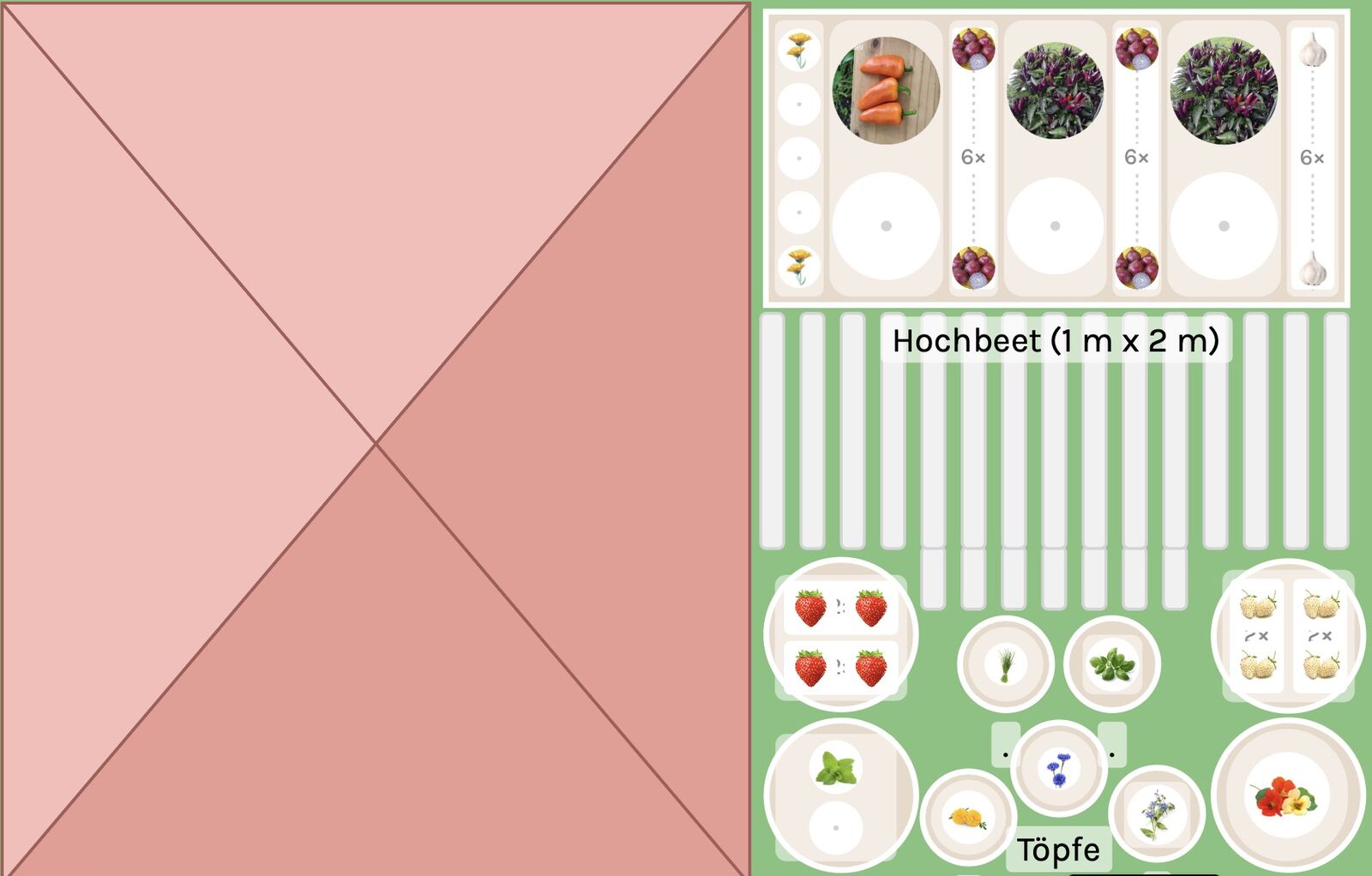
If you have any questions or comments, please write to us at magazin@fryd.app. Would you like to receive helpful gardening tips all year round and plan your own beds optimally? Then register here or download the Fryd app for Android or iOS.
Fryd - your digital bed planner
Marielena
Current Topics in the Community
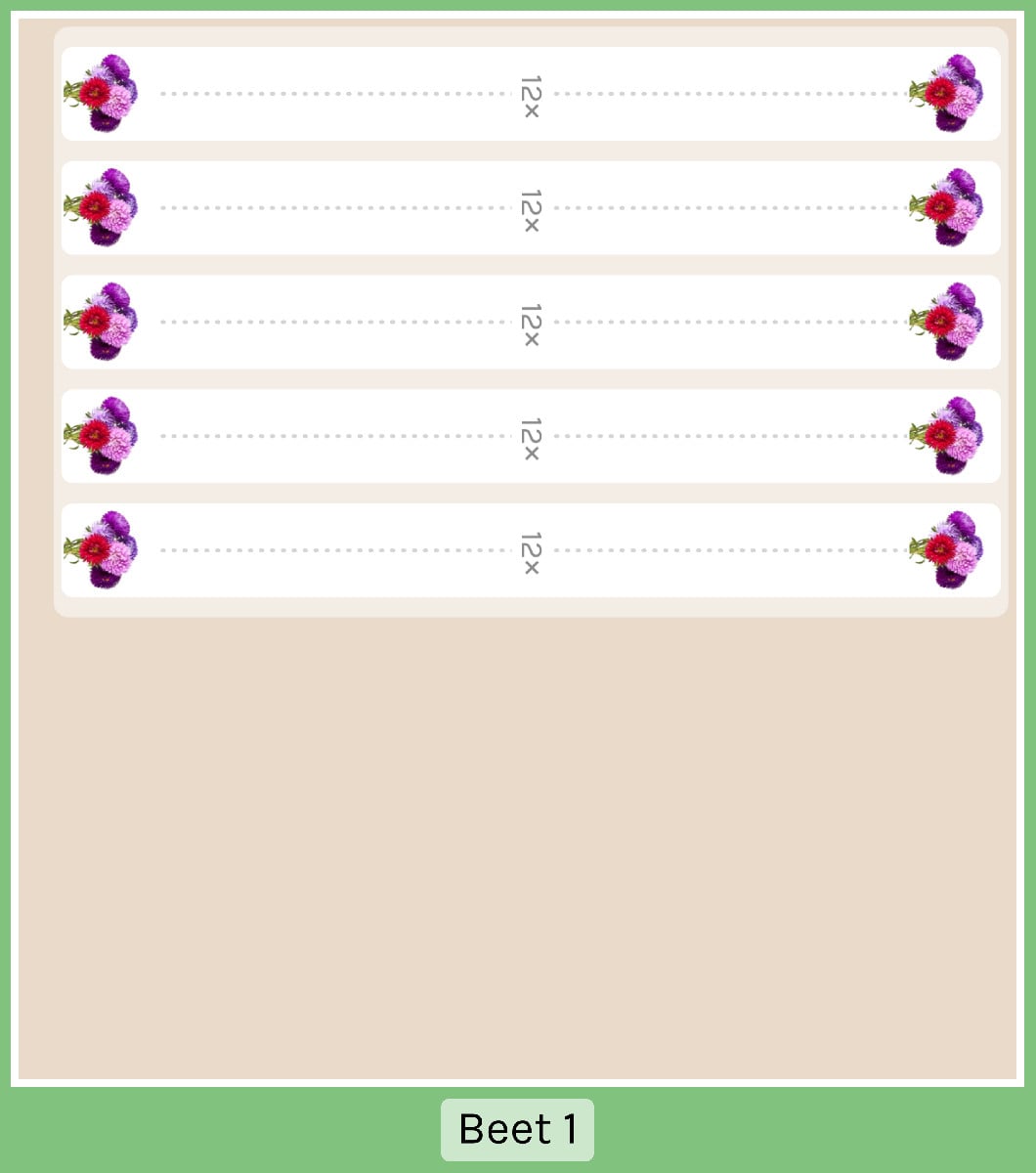

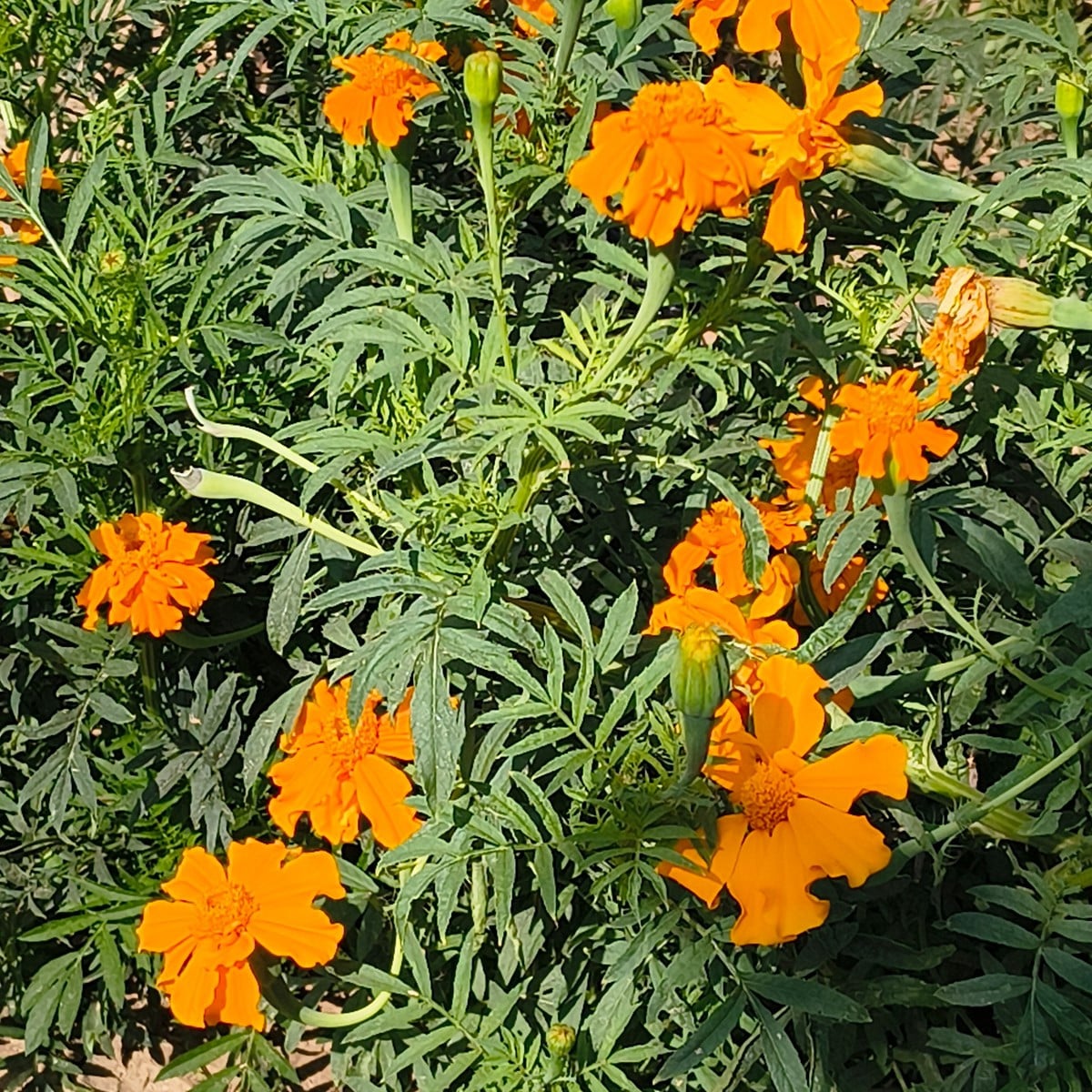
Liked 1 times
@Ufrydpaid_01
Popular Articles

Companion Plants for Carrots: What (Not) to Plant With Carrots

Companion Plants for Celery : What (Not) to Plant With Celery?

Strawberry Types: List of Best Strawberry Varieties

Companion Planting With Strawberries: Companion Plants and Planting Plan

Basil Varieties & Types at a Glance

What to Plant With Cabbage: Good and Bad Companion Plants

Fertilizing Strawberries: Home Remedies & Natural Fertilizers at a Glance

Growing Sweet Potatoes: Tips on Cultivation & Companion Plants

Companion Plants for Kitchen Herbs: Chives, Parsley & Co

What Herbs Can Be Planted Together?
FAQ
Which plants go well with peppers and chili peppers?
In addition to peppers and chili peppers, you can also plant basil, savory, borage, dill, nasturtium, carrots, garlic, cabbage, lavender, parsley, marigold, lettuce, marigold, thyme, tomatoes and onions.
What should you not plant next to peppers and chili peppers?
You should not place eggplants, peas, fennel, beet, potatoes and celery next to peppers and chili peppers.
Can tomatoes and peppers be planted together?
Tomatoes and peppers are often planted together despite their relationship, as both plants have similar needs. If no diseases or pests have established themselves in the soil, this is also not a problem.
Can you plant peppers next to cucumbers?
Yes, they have similar needs for light and water, their shallow roots do not compete with the deeper roots of peppers and chilies. Cucumber leaves can provide shade and protection from strong sunlight.